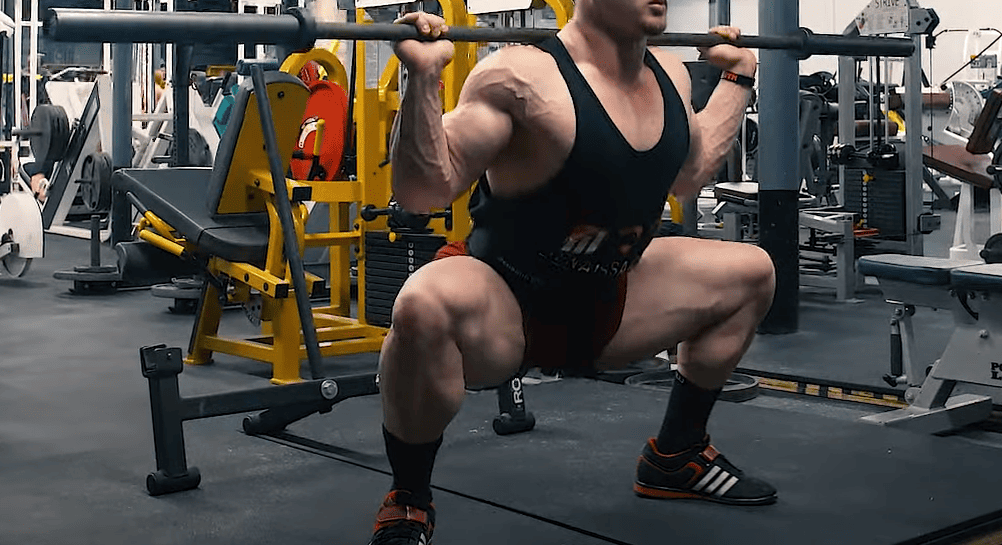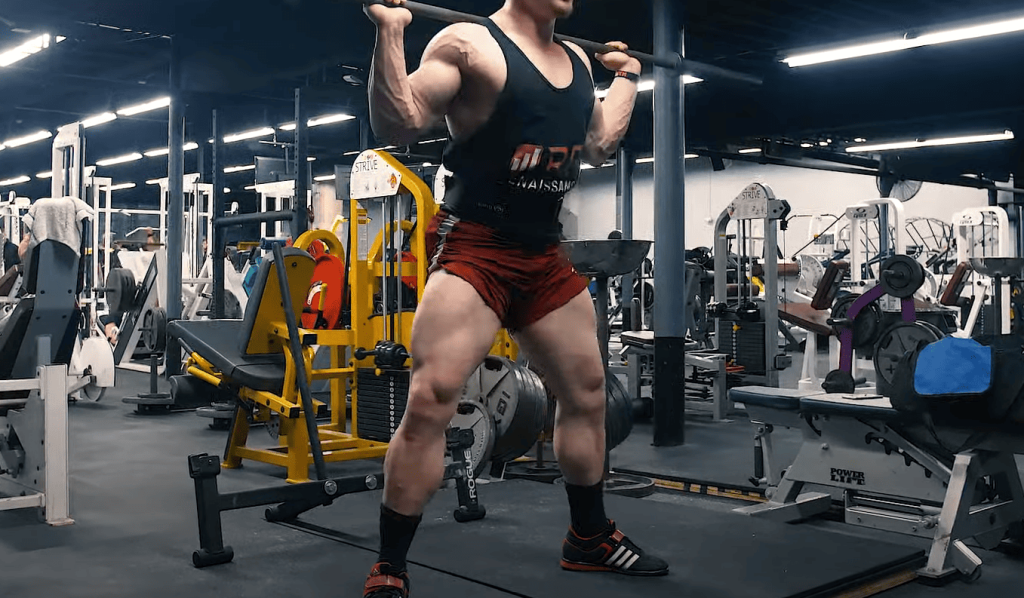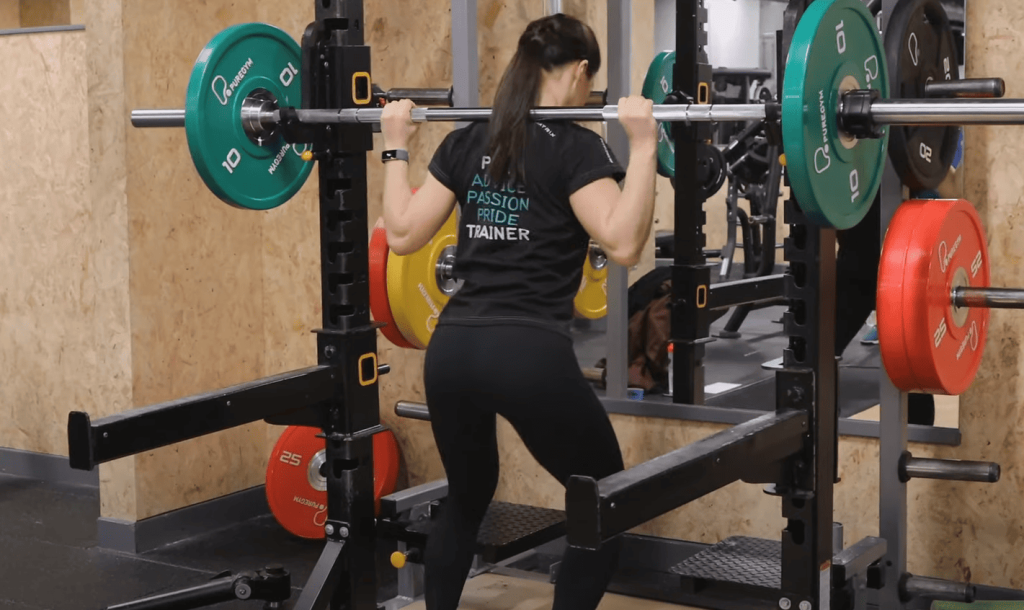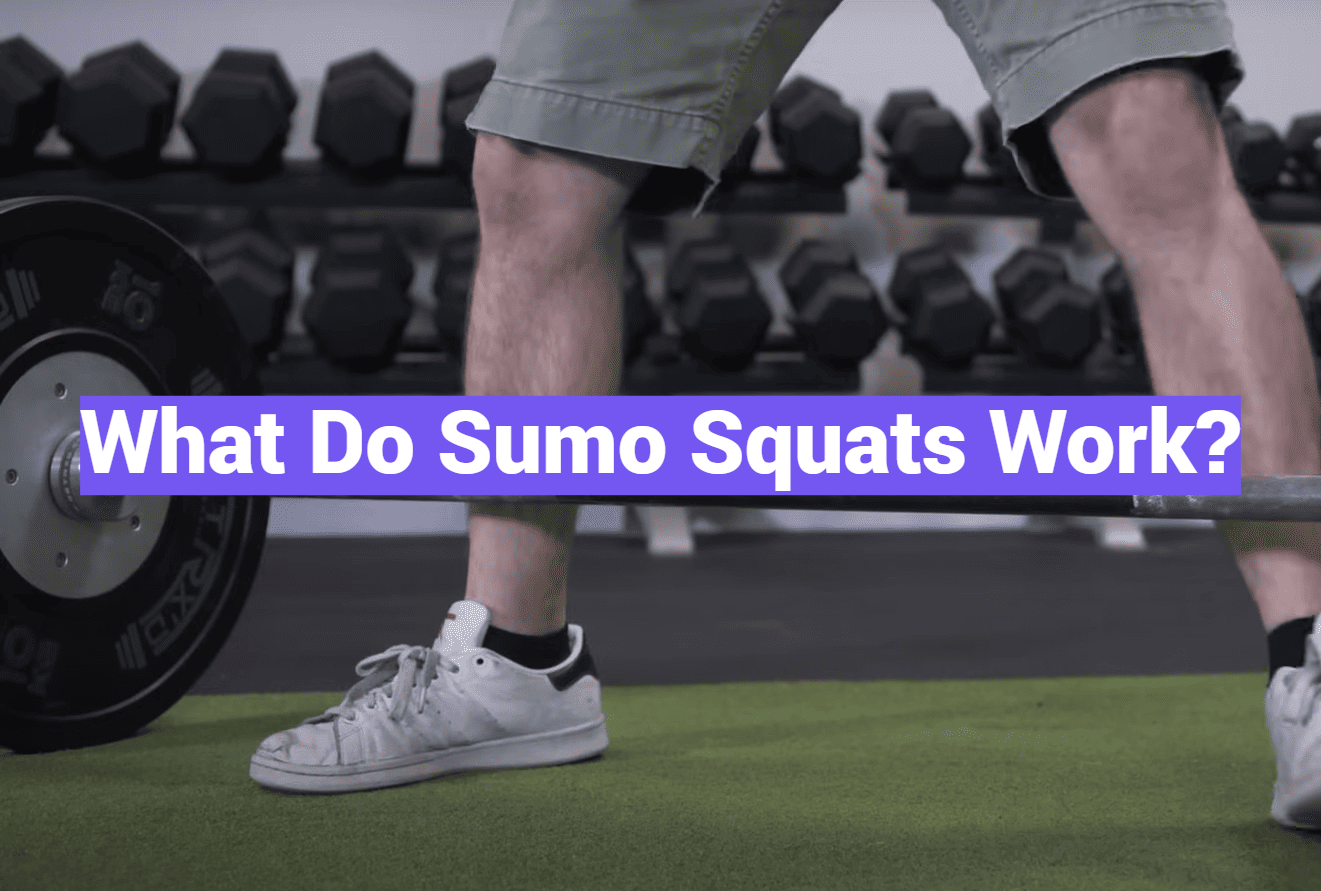Did you know exercises with a wide stance activate inner thigh muscles 40% more effectively than narrow positions? This surprising fact explains why fitness enthusiasts are swapping traditional moves for this powerhouse variation. The unique mechanics of this lower-body exercise create a ripple effect of benefits most people never tap into with standard routines.
By shifting your stance outward and angling your toes, you engage muscle groups often neglected in conventional workouts. This positioning forces your hips, thighs, and glutes to work in perfect harmony, building functional strength that translates to real-world movements. Think climbing stairs, lifting heavy objects, or exploding sideways during sports – these daily actions become easier when you train your body this way.
What makes this exercise truly special is its dual impact on stability and power. While standard squats primarily challenge your front leg muscles, the widened version creates tension across your entire pelvic floor. This full engagement leads to better balance, reduced injury risk, and improved performance in other physical activities.
Key Takeaways
- Wider stances target hard-to-reach inner thigh muscles more effectively
- Engages multiple muscle groups simultaneously for efficient workouts
- Improves functional movement patterns for daily activities
- Enhances joint stability and athletic performance
- Offers variety to prevent workout plateaus
Understanding the Sumo Squat: Definition and Form
Wider stances aren’t just for sumo wrestlers—they’re a game-changer in fitness. This lower-body movement swaps narrow foot placements for a 3-4 foot width, creating a stable base that challenges balance and strength. The secret lies in rotating your hips outward, which naturally angles your toes at 45 degrees.

Proper Stance and Foot Position
Start by stepping sideways until your heels align outside shoulder width. Imagine drawing a straight line from your pinky toes to your knees—this alignment prevents inward collapsing. Your weight should center between your arches, not leaning toward the balls or heels.
| Aspect | Traditional Squat | Wide-Stance Variation |
|---|---|---|
| Foot Width | Shoulder-width | 3-4 feet apart |
| Toe Angle | Forward-facing | 45° outward |
| Primary Focus | Quadriceps | Hips & Inner Thighs |
Mental Focus and Posture Tips
Keep your chest lifted like you’re holding a beach ball between your collarbones. Engage your core as if bracing for a gentle punch. Pro tip: Distribute weight evenly across both feet to avoid favoring one side. Breathe out as you rise, maintaining tension through your glutes.
The Lower Body Benefits of Sumo Squats
Wide-stance movements aren’t just a trend—they’re biomechanical powerhouses. By distributing weight across a broader base, these exercises unlock hidden potential in your hips and thighs. The unique positioning challenges your lower body in ways standard movements can’t match, making everyday actions like lifting groceries feel effortless.
Building Powerhouse Legs and Glutes
This exercise turns your glutes into turbocharged engines. The widened stance amplifies activation in your posterior chain, particularly the gluteus maximus. You’ll develop explosive hip strength that improves jumping height and sprinting speed.
| Muscle Group | Standard Squat Activation | Wide-Stance Activation |
|---|---|---|
| Glutes | Moderate | High |
| Inner Thighs | Low | Very High |
| Core | Secondary | Primary |
Mastering Stability Through Movement
Balance improves dramatically with consistent practice. The wide foot placement trains your body to maintain control during lateral shifts. This translates to better performance in sports requiring quick direction changes.
Your core muscles work overtime to keep your torso upright. This constant engagement strengthens the deep stabilizers around your spine. Over time, you’ll notice improved posture during both workouts and daily tasks.
Exploring How Sumo Squat Muscles Worked Influence Performance
The effectiveness of any exercise lies in its ability to engage multiple groups simultaneously. Wide-stance movements create a kinetic chain reaction that transforms how your body generates power. Let’s examine what makes this approach uniquely impactful.
Powerhouse Players
Your glutes and quadriceps become primary drivers during the upward phase. Hamstrings act as stabilizers, preventing excessive forward lean. Research shows the inner thigh area (adductors) fires 30% harder here than in narrow-stance versions.
Hidden Support System
Secondary groups kick in to maintain alignment. Calves ground your feet while hip flexors control depth. Your core muscles form a natural weightlifting belt, with one study noting 22% greater oblique activation compared to standard techniques.
Athletes experience tangible benefits from this full-body engagement. Basketball players improve lateral quickness, while parents find lifting toddlers easier. The secret? Training movements, not isolated areas.
“Our EMG data revealed unprecedented adductor involvement during the concentric phase,” states lead researcher Dr. Elena Marcos from the Journal of Sports Science.
This comprehensive activation pattern explains why physical therapists often recommend these movements for injury recovery. Balanced development reduces strain on overused joints while building resilient tissue networks.

Step-by-Step Guide to Executing a Perfect Sumo Squat
Mastering proper technique transforms this exercise from a simple movement to a full-body strength builder. Let’s break down each phase to ensure maximum effectiveness and safety.
Initial Setup and Positioning
Begin with feet under your shoulders, toes forward. Step sideways until your heels sit 3-4 feet apart – imagine creating a triangle with your hips as the apex. Rotate toes outward at 45 degrees while keeping knees aligned over ankles.
| Phase | Key Points |
|---|---|
| Stance Width | Heels outside shoulder line |
| Foot Angle | 45° outward rotation |
| Hip Position | Tailbone pointing downward |
Descent and Ascent Techniques
Push hips back like closing a car door with your rear. Lower slowly until thighs align with the floor – think parallel, not deeper. Keep chest lifted and core engaged throughout.
| Movement Phase | Form Cues |
|---|---|
| Lowering | Knees track over toes |
| Bottom Position | Weight in midfoot |
| Rising | Drive through heels |
Breathe in during descent, exhale forcefully while returning upright. Start with 3 sets of 8-12 reps, maintaining a 2-second lowering tempo. Pro tip: Place a chair behind you to practice depth control without strain.
Adding Resistance and Variations for a Challenging Workout
Ready to level up your lower-body routine? Progressive overload transforms basic movements into strength-building power tools. Let’s explore creative ways to intensify your training while maintaining proper form.
Smart Equipment Integration
Dumbbells offer versatile loading options. Hold lighter weights at shoulder height for shoulder stability work. Position medium loads at your hips to emphasize glute activation. For advanced lifters, a single heavy dumbbell gripped between your legs challenges grip strength while deepening range of motion.
Kettlebells shine in goblet-style executions. Cradle the bell against your chest to maintain upright posture. This position naturally engages your core and prevents forward lean during descent.
| Variation | Equipment | Focus Areas |
|---|---|---|
| Standard Weighted | Dumbbells | Full-body stability |
| Goblet Style | Kettlebell | Core engagement |
| Plié Execution | Bodyweight/Barbell | Hip mobility |
Strategic Movement Tweaks
The plié variation mirrors traditional wide-stance mechanics but emphasizes continuous tension. Elevate your heels slightly to target quadriceps more intensely. For posterior chain development, try tempo squats with a 4-second lowering phase.
Goblet executions work wonders for improving squat depth. Pro tip: Start with 5-10 lbs below your max capacity to perfect technique. Gradually increase weight weekly while maintaining full range of motion.
These modifications prevent workout plateaus by challenging your body through new movement patterns. Alternate between variations every 4-6 weeks to sustain progress and avoid adaptation.
Comparing Sumo Squats to Traditional Squats
Your foot placement during lower-body exercises changes everything – let’s break down why. Traditional and wide-stance versions both build strength but achieve different training outcomes through distinct mechanics.
Muscle Engagement Differences
The front-facing technique emphasizes quad development. Narrow foot positions create forward knee travel, loading your thighs more directly. Research shows 18% greater quad activation in standard versions compared to wider alternatives.
| Movement | Primary Focus | Secondary Activation |
|---|---|---|
| Standard | Quadriceps | Hamstrings |
| Wide-Stance | Inner Thighs | Glutes |
Wider positions redistribute force through your hips. This positioning creates 30% more adductor engagement according to biomechanical studies. Pro tip: Athletes rehabbing knee injuries often prefer this variation for reduced joint stress.
“Our motion capture data reveals wider stances decrease patellar tendon strain by 22% during descent phases,” notes kinesiologist Dr. Rachel Torres.
Range of motion differences matter too. The traditional version allows deeper knee flexion, while the wide alternative prioritizes hip mobility. Choose based on your goals: maximal strength gains favor shorter ranges with heavier weights, while mobility-focused routines benefit from full-depth execution.
Smart programmers alternate between both styles. Use front-facing versions for explosive power days and wide-stance variations for stability-focused sessions. This strategic approach prevents plateaus and balances muscle development.

Improving Mobility and Flexibility Through Sumo Squats
What if your workout could double as physical therapy? The unique mechanics of this lower-body movement naturally enhance joint health while building strength. By combining deep stretches with controlled resistance, it addresses modern mobility challenges caused by sedentary lifestyles.
Unlocking Your Body’s Movement Potential
The widened foot position creates space for your hips to move freely. As you lower into the movement, tight hip flexors and inner thighs experience therapeutic stretching. This dynamic combination improves range while strengthening the muscles that support proper alignment.
Three key benefits emerge from consistent practice:
- Reduced stiffness in lower back areas through upright torso positioning
- Increased external rotation capacity to counteract desk-job postures
- Enhanced flexibility in thighs and pelvic region
“Patients using this technique regained 15% more hip motion in 6 weeks compared to standard stretching,” reports physical therapist Mark Sullivan from Mobility First Clinic.
Daily movements become smoother as your body adapts. Getting in/out of cars, gardening, or playing with kids feels effortless. The secret lies in training your hips through their full range while maintaining spinal stability.
For best results, pair this exercise with dynamic warm-ups. Focus on controlled descents to maximize the stretching effect. Over time, you’ll notice improved mobility in workouts and everyday life.
Common Mistakes and Tips for Optimizing Form
Perfecting your technique prevents setbacks and maximizes results. Many enthusiasts rush progressions or compromise alignment, missing the exercise’s full potential. Let’s explore smart strategies to refine your execution.
Preventing Injury Through Proper Technique
Keep your knees tracking over toes during descent – collapsing inward strains joints. Distribute weight evenly across both feet, maintaining three points of contact (heel, ball, pinky toe). Avoid rounding your back by keeping your torso upright like you’re balancing a book on your head.
Gradual Progression and Flexibility Enhancements
Start with partial range motions if tight hips limit depth. Improve ankle mobility by rolling your feet on a tennis ball pre-workout. Strengthen your back with planks to maintain neutral spine positioning. Add resistance only when you can complete 12 reps with perfect torso alignment.
Consistent practice builds joint resilience. Pair this movement with dynamic stretches for hips and knees. Remember – quality repetitions trump heavy weights for long-term progress.

